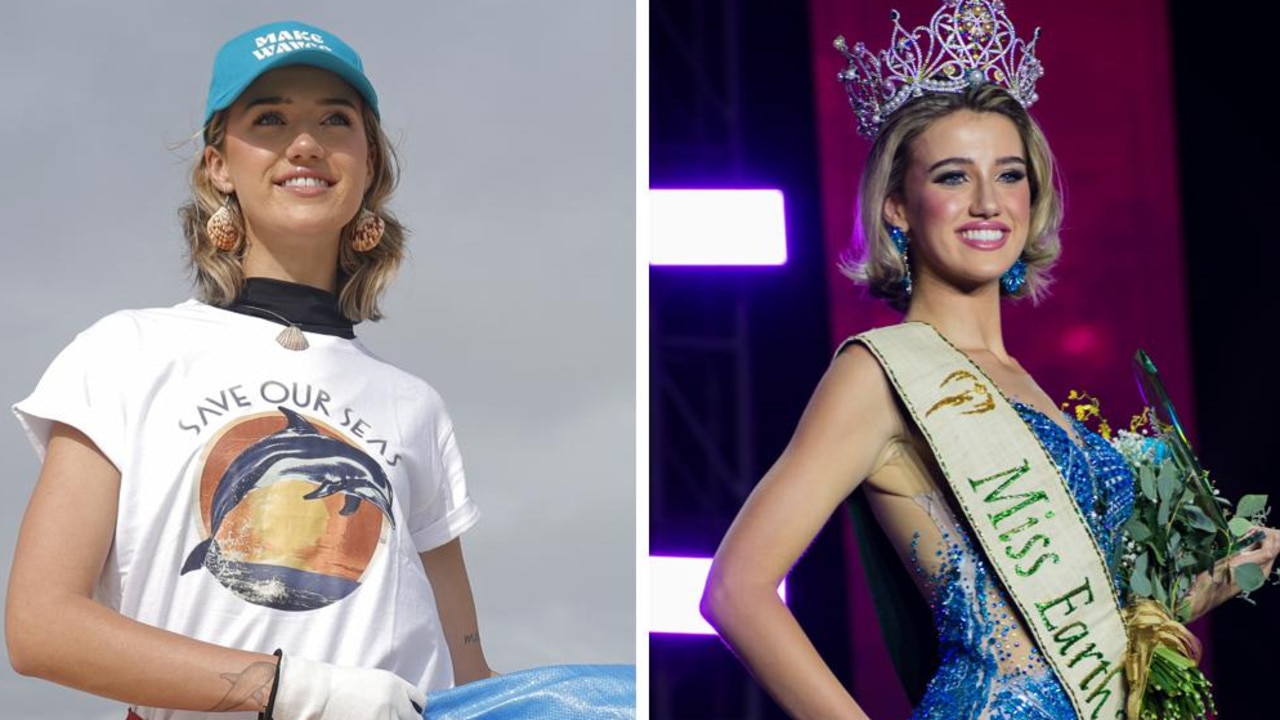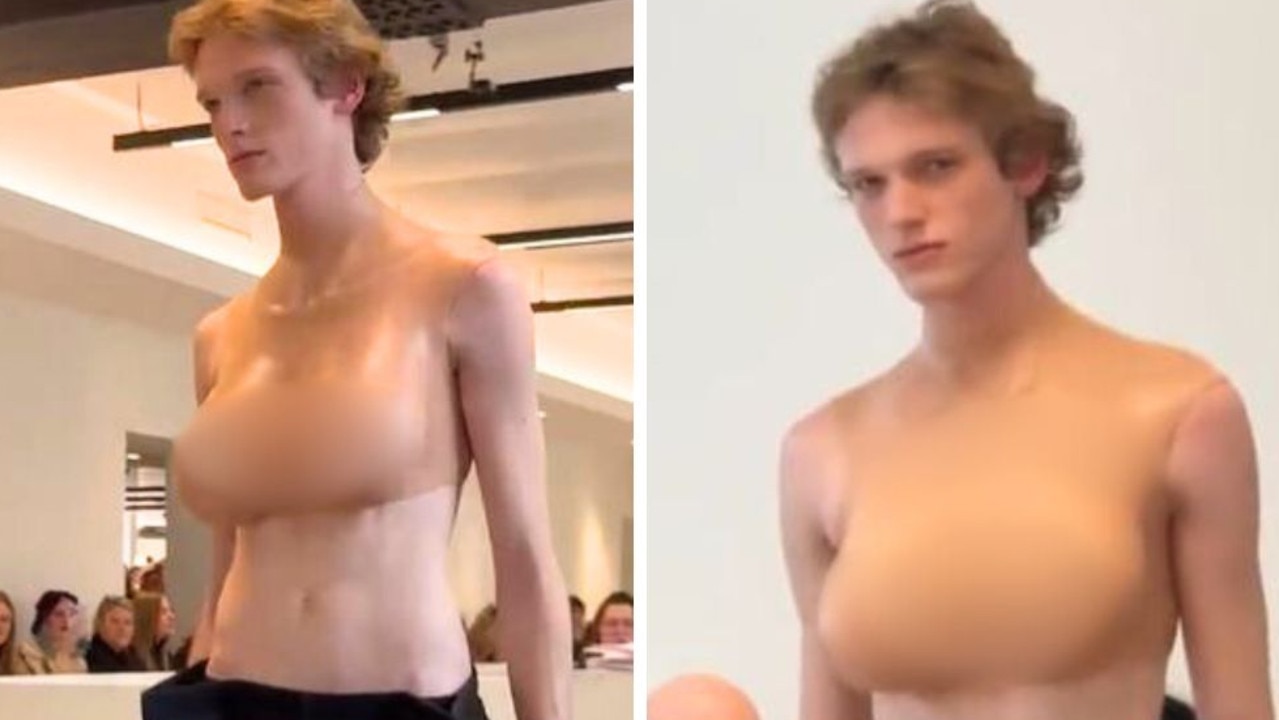How luxury fashion house Dolce & Gabbana came crashing down
Dolce & Gabbana is one of the world’s most elite brands. But the powerhouse has come crashing down over a series of ‘racist’ mishaps.
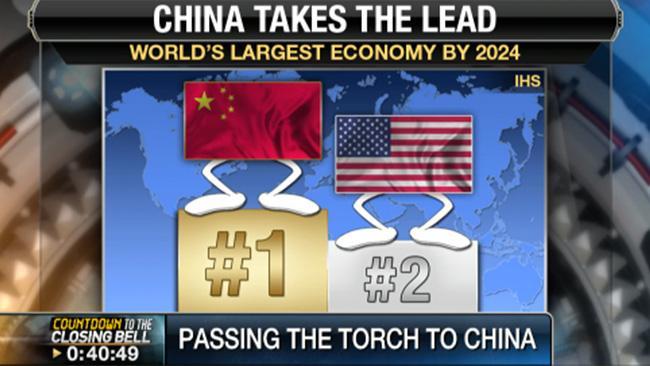
If you want to get some sense of China’s influence in the commercial market, look no further than the latest Dolce & Gabbana scandal.
The luxury fashion house has come under fire this past week following an outcry over racially offensive posts on its social media accounts.
Designers Stefano Gabbana and Domenico Dolce issued a video apology, but the damage is done — they’ve infuriated the world’s most important luxury market, and now they’re being made to pay.
Here’s how it all went down.
HOW DOLCE & GABBANA ENRAGED A NATION
Dolce & Gabbana were planning the biggest fashion show in its 33-year history.
According to Vogue, The Great Show — which was to be presented in Shanghai on November 21 — would have featured over 300 looks, 140 performers and a one-hour ode to China, all watched by a 1400-strong audience crowded with the country’s elite socialites.
It was a big deal, especially because Chinese purchases at home and abroad account for around 30 per cent of global luxury goods sales.
According to a recent report by the consultancy Bain & Company, the luxury goods market in mainland China has been forecast to grow by up to 22 per cent this year.
But a series of unfortunate posts and comments have brought the Italian fashion label crashing down.
It all started on November 17, when a series of short video advertisements for the event were posted on social media.
The first video featured a Chinese model in a sequined red dress trying — and failing — to eat pizza with chopsticks.
Stereotypical Chinese music plays in the background as she pokes at the pizza with the eating utensils, before a narrator chimes in and patronisingly says “don’t attempt to use the chopsticks as knives” and “just use your chopsticks like pliers”.
Follow-up videos featured the same model trying to eat a cannoli and a bowl of spaghetti.
In the video with the cannoli, a male narrator asks the model: “Is it too big for you?”
At one point, the narrator appeared to mispronounce the brand’s name, which some interpreted as a dig at the way Chinese people pronounce “Dolce & Gabbana”.
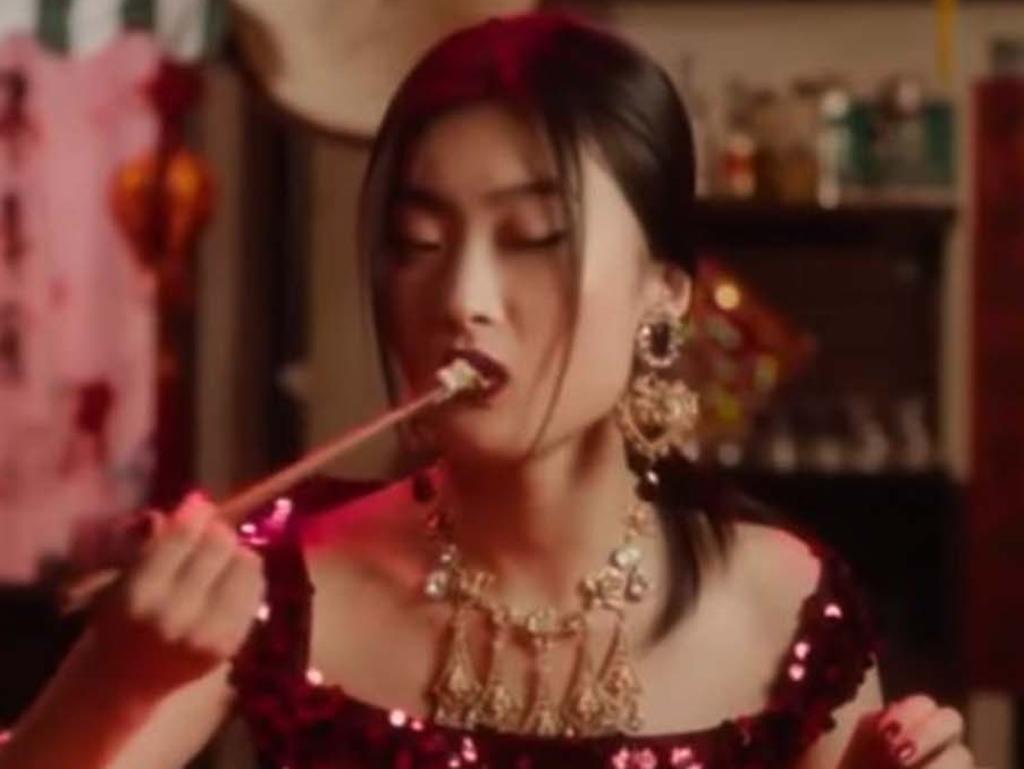
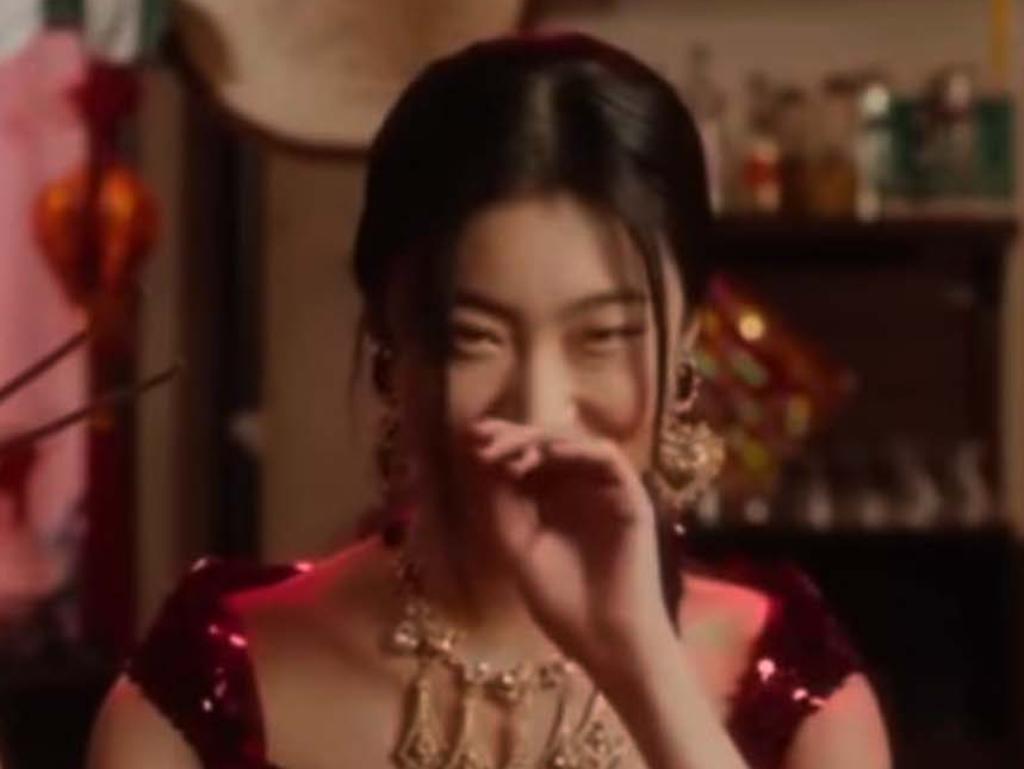
The backlash came in swift on Chinese social media, with thousands of Weibo users complaining that the videos were racist and belittled Chinese culture.
According to The Jing Daily, users complained that the ad “referred to chopsticks as a ‘small-stick’ tool while called Italian food great and tasty, which made many people feel the brand is arrogant about its cultural roots”.
The videos prompted a #BoycottDolce hashtag, and people demanded an apology be issued in both Chinese and English.
Still, had the luxury fashion house swiftly removed the videos and posted an immediate apology, the fashion show might have been salvaged.
But it’s what happened next — secret derogatory Instagram texts allegedly sent from Gabbana’s account — that sent things over the edge.
VILE PRIVATE MESSAGES GO VIRAL
In the wake of the chopsticks video controversy, a private argument surfaced between Gabbana’s verified account and Instagram user @michaelatranova.
In the Instagram messages, Gabbana refused to apologise for the videos, and seemed to go on a wildly racist rant.
“It was deleted from Chinese social media because my office is stupid as the superiority of the Chinese … it was by my will I never cancelled the post,” he allegedly wrote.
“And from now on in all the interviews that I will do international I will say that the country of [poop emojis] is China … and you are also quiet that we live very well without you.
“China Ignorant Dirty Smelling Mafia.”
Tranova sent the post to Diet Prada, an anonymous Instagram account with almost one million followers that airs the fashion industry’s dirty laundry.
Shortly afterwards, Instagram user @anthxnyxo posted more screenshots of alleged messages with the official Dolce and Gabbana Instagram account.
“Oh ok you were the bitch that talked to the stupid fashion blog,” the powerhouse label allegedly wrote. “Blocked you then block you now.
“Ni hao stupid bye.”
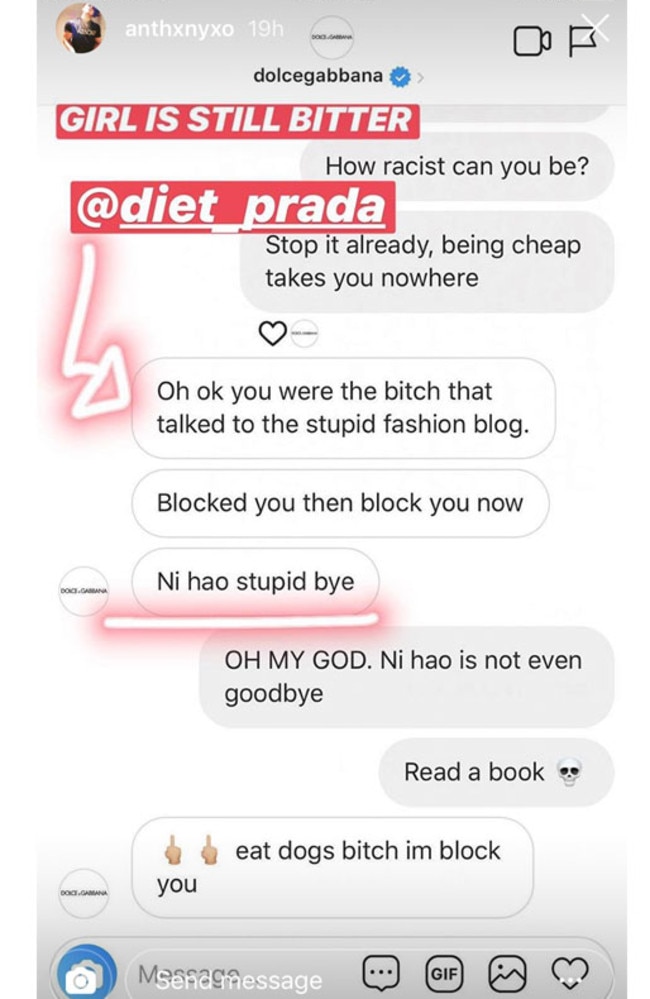
Dolce & Gabbana soon issued a public post claiming that both its official Instagram account and Gabbana’s personal account had been hacked. “Our legal office is urgently investigating,” it said in a post. “We are very sorry for any distress caused by these unauthorised posts, comments and direct messages.
“We have nothing but respect for China and the people of China.”
But the damage was done.
The Cultural Affairs Bureau of Shanghai subsequently cancelled The Great Show, after more than 100 Chinese models booked for the show began to pull out.
The models posted photos of themselves on social media with the caption “Not Me” in bright red letters.
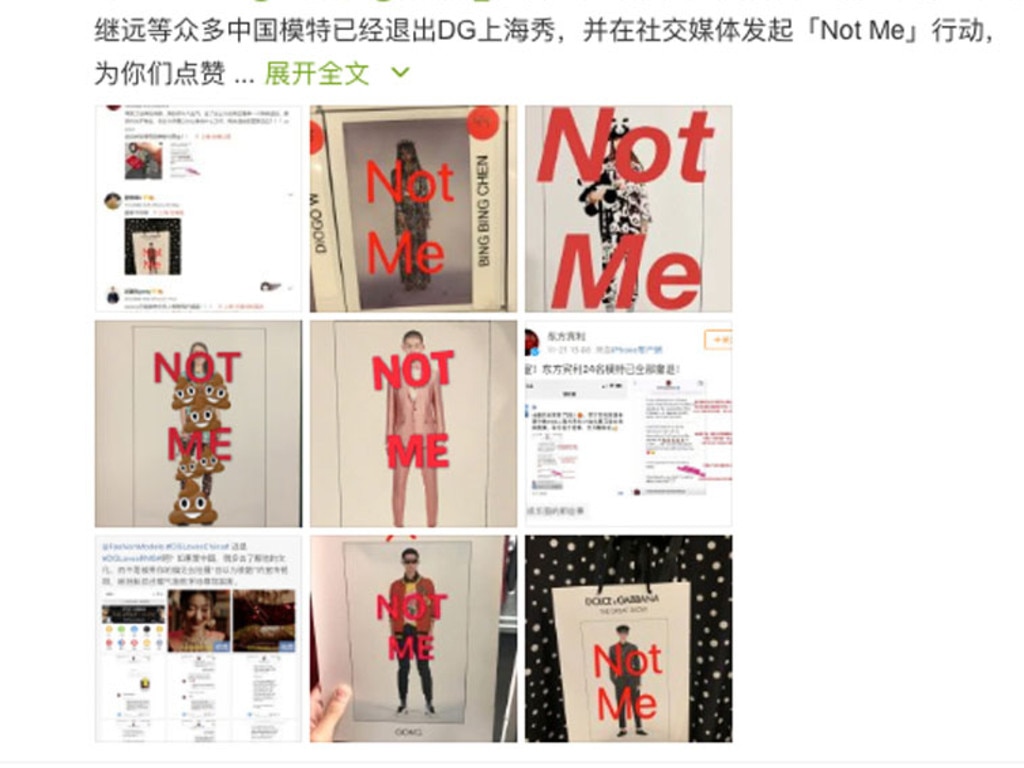
In an Instagram post tagging both the brand and Gabbana directly, Chinese-French model Estelle Chen cast doubt on their apology.
“You don’t love China, you love money,” she wrote. “China is rich yes but China is rich in its values, its culture and its people and they won’t spend a penny on a brand that does not respect that.”
Zhang Ziyi, a Chinese actress who starred in Ang Lee’s Crouching Tiger, Hidden Dragon, said in a public social media post that the Italian brand had “disgraced itself”.
Diet Prada later shared an image on its Instagram story of the backstage at The Great Show in tatters, with clothes, thongs and bags strewn all over the floor.
Dolce & Gabbana was done for.
‘ONE OF THE BIGGEST DISASTERS IN THE FASHION INDUSTRY’
It’s been three days since Dolce & Gabbana’s public apology, but the controversy is still not over.
Chinese e-commerce sites including Alibaba, JD.com Inc and Kaola have removed the luxury brand’s products and listings.
Analysts say controversies of this nature could affect sales as buyers become more discerning about brands.
“It’s a different market now — Chinese customers are savvier, and there’s so much more choice,” Sindy Liu, a London-based luxury marketing consultant, told Reuters.
“A lot of Western brands don’t really understand China that well when it comes to cultural sensitivities. But most brands are quite careful, they don’t do things that are humorous.”
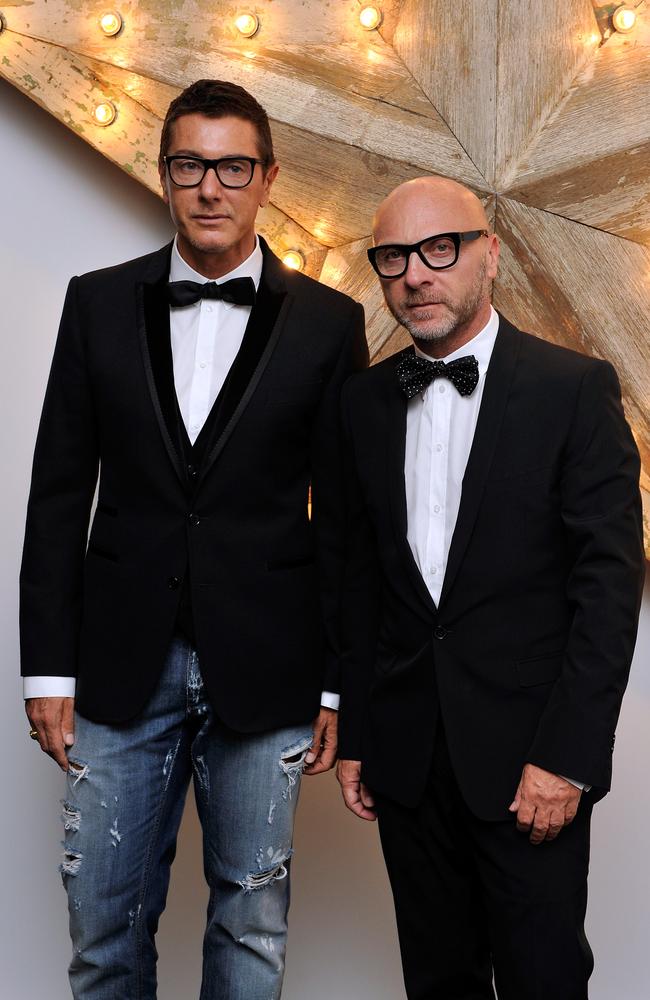
This morning, Chinese state media newspaper The Global Times issued an opinion piece describing the scandal as “one of the biggest disasters in the fashion industry”.
Noting that China “represents 36 per cent of the international luxury market and that will become the largest in the coming four years with more than 42 per cent of premium purchases made by Chinese”, the article issued a 10-point warning to Western brands that wish to conduct business in China.
Among them, it urges businesses to “respect the long history of China and keep an open mind”, be “politically correct in China”, be “fair and transparent” with Chinese consumers and learn to communicate with the Chinese in “their own ‘language’” — that is, a way that won’t spark cultural insensitivities.
Dolce & Gabbana have not posted to their social media channels since apologising.
It’s not the first time the brand has courted controversy. Last April, the brand posted a campaign on Weibo depicting impoverished people in run-down parts of Beijing. The backlash was sparked over its decision not to portray richer, more modernised parts of the Chinese capital.
In 2016, the brand similarly sparked controversy after describing an item in its spring/summer collection as a “slave sandal”.

